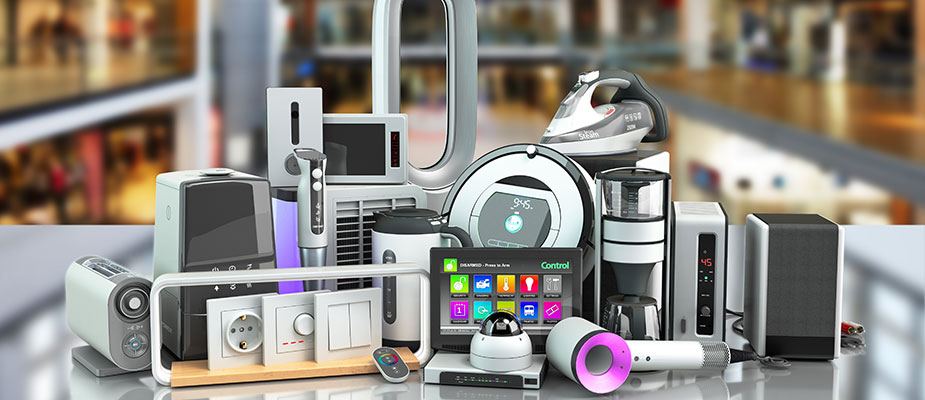Developing a consumer-grade electronic device is an exciting yet significant undertaking, and it can be an intimidating space to navigate on your own. As both an engineer and consultant in the embedded systems space, I’ve put together a list of personal insights that just might save your project from some common, unseen pitfalls. This list isn’t comprehensive by any means (I wish it were that easy), but hopefully it will help guide your project to success.
1. Fail Fast and Fail Often
A classic engineering motto. No matter how precious your product may be, it’s always best to push it to its limits and see where improvements or fixes can be made. Be sure to include testing in your timeline, as unforeseen issues are bound to arise when developing products of all types. Having a dedicated engineering team for product design, testing and planning can be an invaluable addition, as you can expect your product to undergo fewer iterations, streamline the process, and ultimately save yourself both time and money.
2. Consider Support for Your Users
It’s very easy to get caught up in the excitement of developing a new product. So much so that it’s challenging to anticipate your customers’ needs once your product is in their hands. Support can look like replacing or repairing units, handling support cases, implementing firmware updates for quality of life, and a plethora of other tasks if IoT is involved. If you find yourself lacking the spare hands to tackle support requests, you always have the option to outsource work, even if temporary.
3. Backup Your Files
As a contractor, I’ve heard many horror stories of clients having lost their precious source code. Your future self will be so grateful that you took the extra precaution to keep the fruits of yesterday’s labor safe. This can apply to many different types of files: CAD, PCB design files, documentation, software/firmware, and much more. At DMC, we heavily utilize GitLab to track development and releases, but there are many other platforms to choose from. Once you adopt version control, long gone are the days of file names like “source files (final) (2) (fixed).zip”.
4. Identify Your Needs for Internal Teams
Depending on the intricacy of your product, you may need to employ dedicated teams to cover the different scopes involved. These teams may be involved with mechanical design, electrical design, firmware, backend software, and much more. To tie all these teams together, a project manager is essential for cohesion between teams.
5. What Does User Experience Look Like?
If a user needs to install your device, how can you simplify the process and minimize frustration? If your system is complex with multiple moving pieces, what user feedback is there to inform customers of proper use? The nature of user interaction varies widely from one product to another, but a polished and intuitive design is the ultimate driver of user satisfaction.
6. Determine Your Goals for Production
Find a unique balance between the cost per unit in materials, the cost for assembly, and components used. Optimizing these aspects will have a significant impact on the profitability and success of your product. 3D printing is fantastic for highly customized parts, but terrible for large-scale production. Drop-in off-the-shelf components may be a breeze to work with but may incur significantly higher production costs than a fully custom solution.
7. Do What You Can to Simplify Assembly
Assembly costs for a physical product can be a big budgetary blind spot. A robust and visually elegant design can still be one that is awkward to assemble, incurring exponential assembly costs. Whether you are assembling in-house or using a contractor, designing your product for ease of assembly will save you time and money in the long run.
8. What Technologies Are Associated With Your Niche?
If you’re serving a high-tech market, you need to keep up with the latest technological advancements. If you’re entering a market that is standardized in antiquity, you’ll need to be familiar with the nuances and pitfalls of its technology to ensure the success of your device. If you and your team lack the technical know-how, outsourcing is always an option to satisfy the needs of your niche, whether that is getting a second opinion or completely outsourcing a given aspect of your product’s development.
9. Does Your Device Need Any Certification Before It Can Hit the Shelves?
Many products need to be up-to-snuff with different regulatory bodies. If you aren’t sure what certifications you may need, looking at what your competitors are trying to meet is always a good starting point. Some regulatory bodies I have worked with are involved in communications and safety regulations, like the FCC and the CSA. Having a more intimate knowledge of the goings-on of these tests will ensure your device surpasses its requirements.
Main Takeaways
While this list is certainly not comprehensive, it hopefully got some gears turning. Knowing all the unknowns is unrealistic when you’re at the starting line, but you don’t have to be alone on your journey. DMC offers a wide range of services to help bring your product to life, from the idea’s initial conception to the final ‘IT’S ALIIIVVEE!’ moment.
If you’re ready to elevate your consumer electronics product, be sure to contact us today to see how we can help make your next project smoother, smarter, and way more gratifying.







